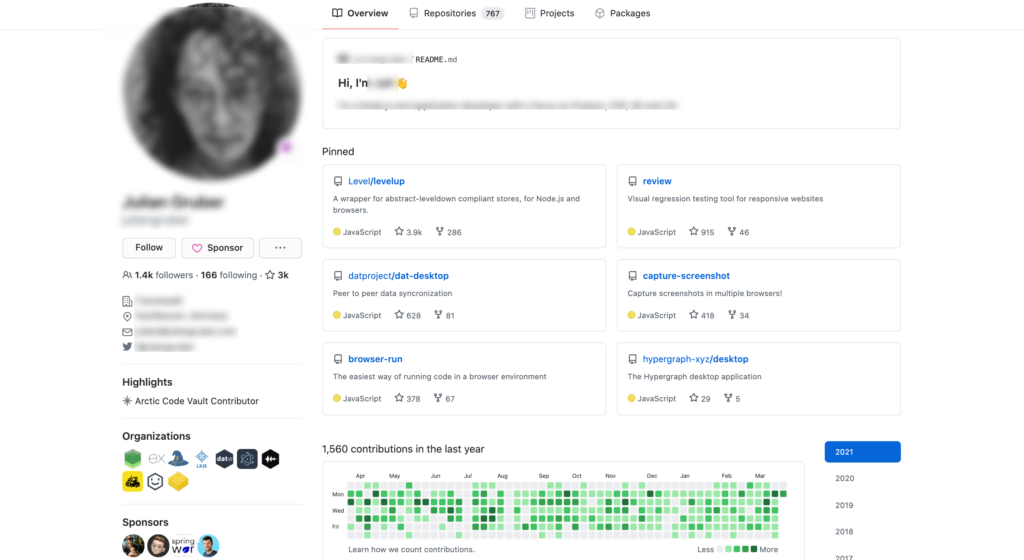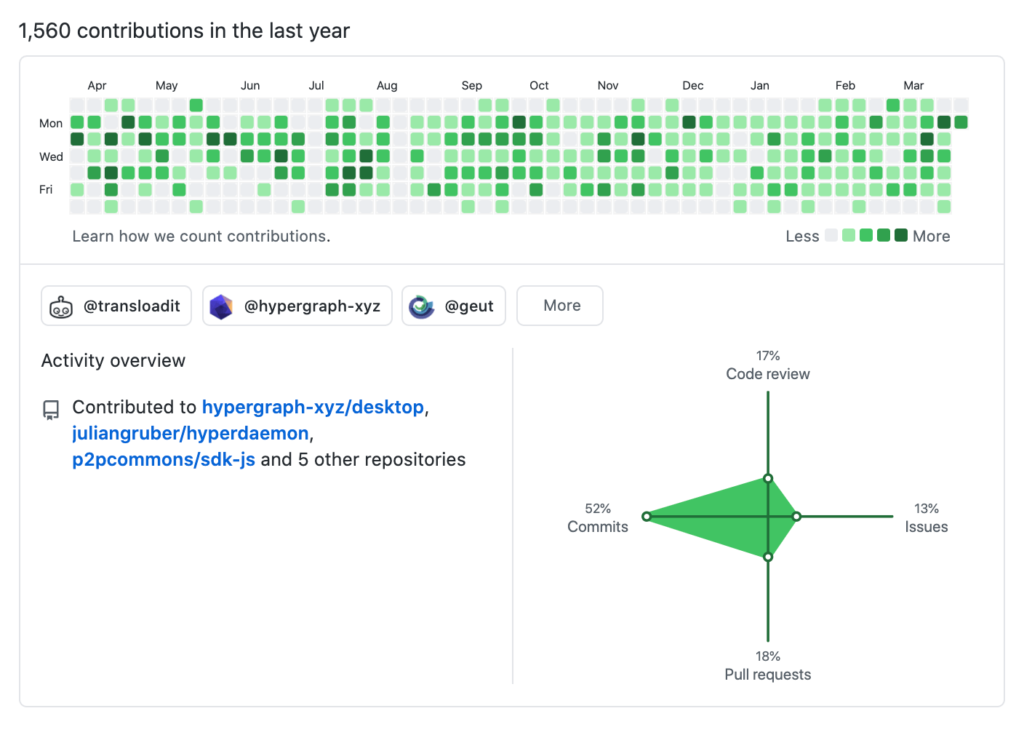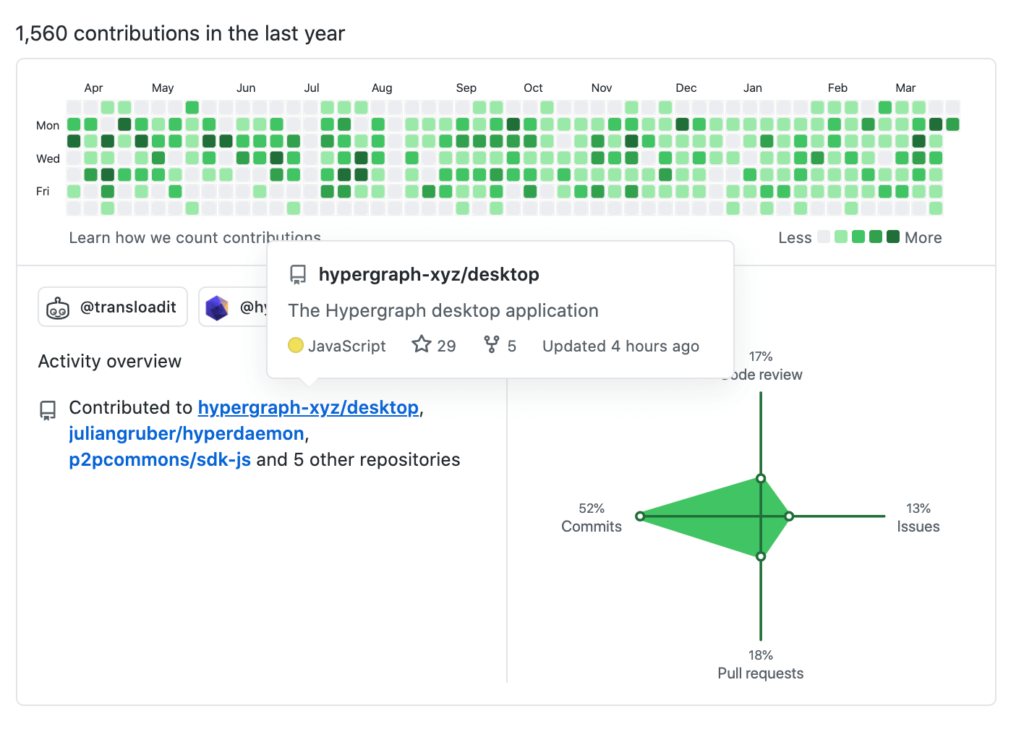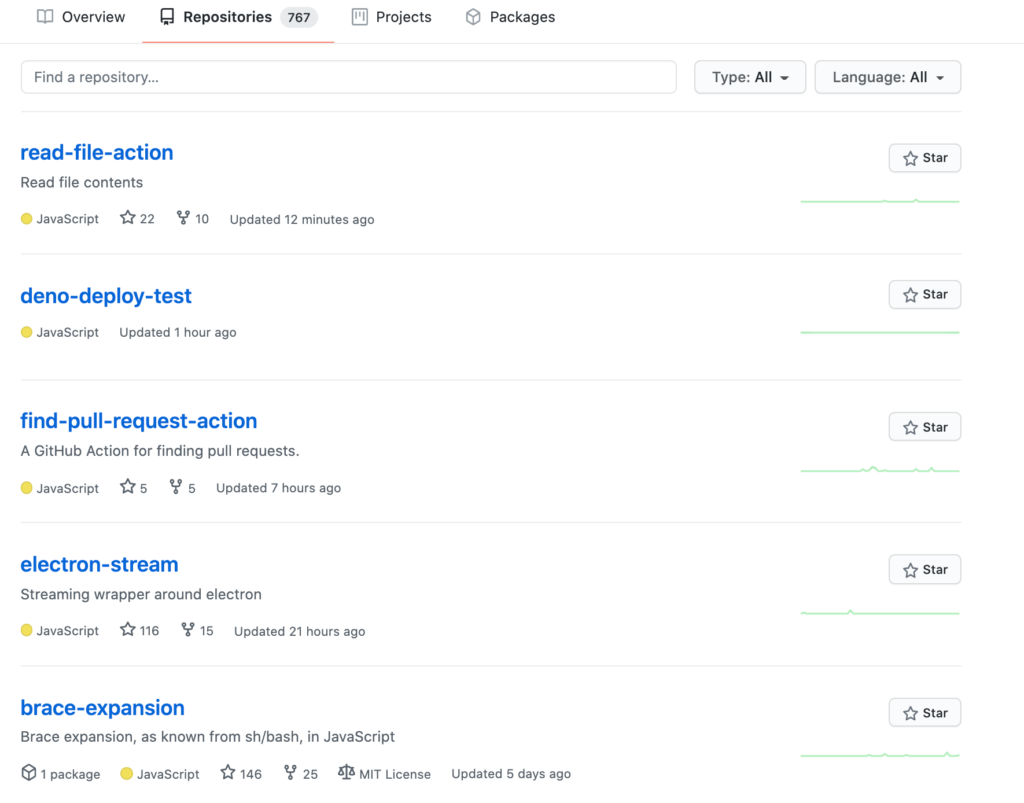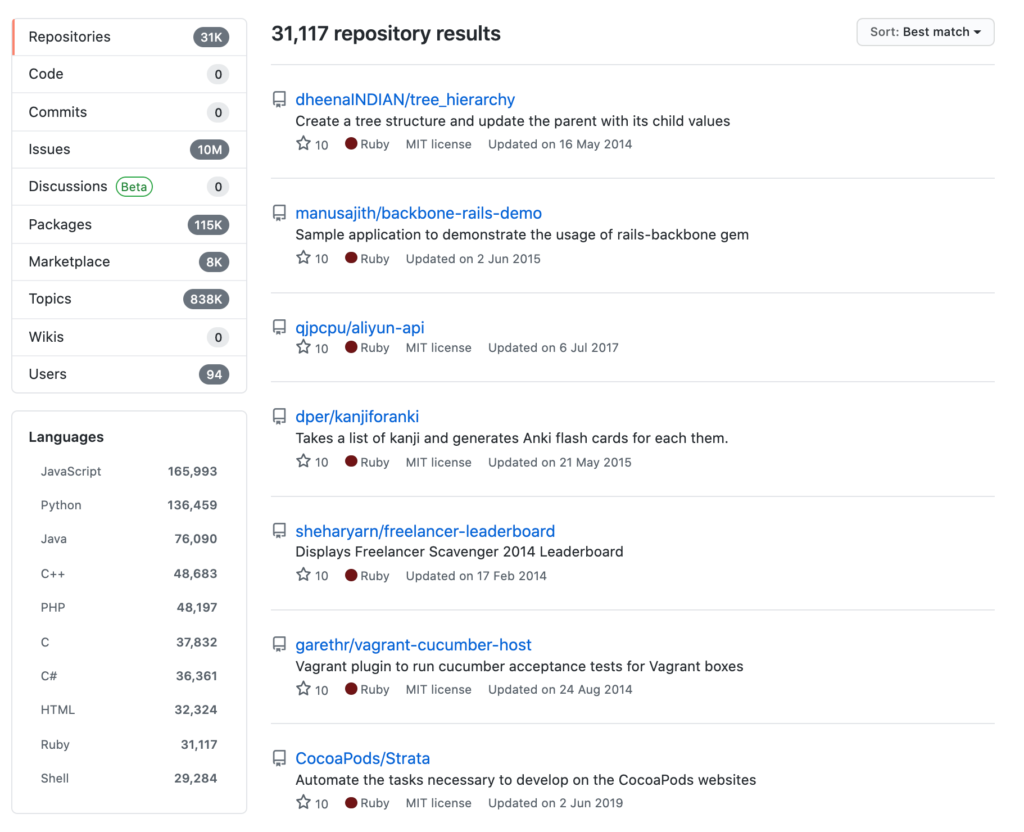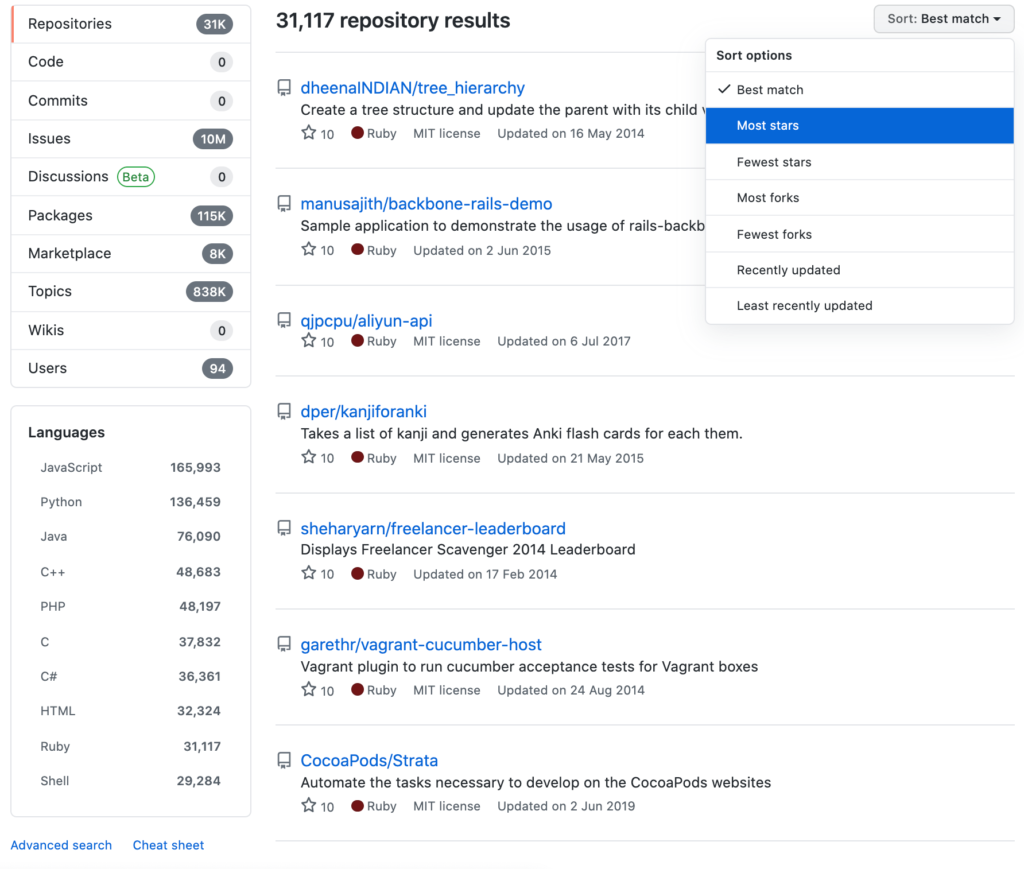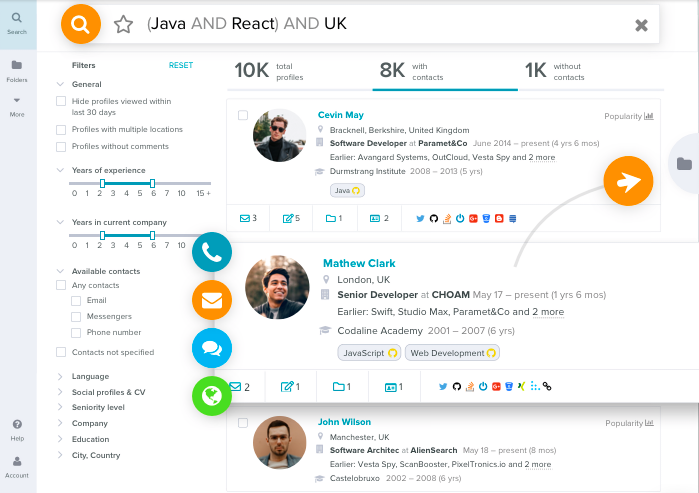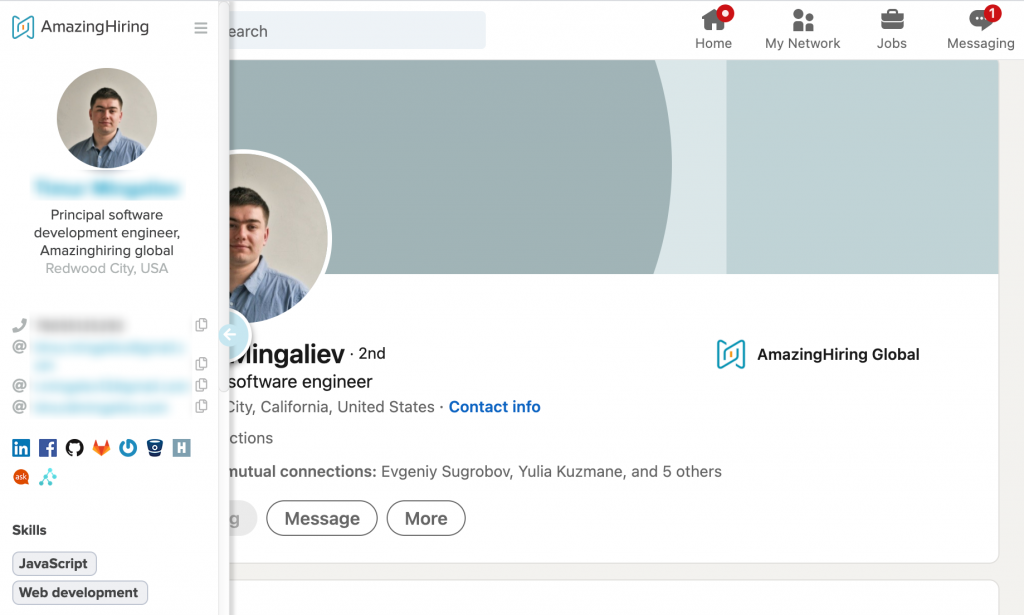We have already written plenty about the fact that if you want to find a strong developer, usual sourcing resources are not very helpful: top developers do not search actively for new jobs and do not use regular job boards or LinkedIn. You will have to use specialized sites to find top tech talent. So how can one find a developer these days?
Software developers can be found on the platforms where the IT community shares coding tips, collaborates and learns from each other.
GitHub is one of these platforms. Find out what GitHub is, what a developer’s profile can say about them, and how exactly recruiters find a professional there.
Let’s start with the basics: what is GitHub?
GitHub is the largest web-based hosting service for IT projects with development collaboration features. More than 32 million users log in to GitHub every month. It is the place where developers can store and share their code and also work on open source collaboration projects (e.g. Ruby on Rails).
All the development projects on the site use the Git version control software (the system which keeps track of changes in the projects). It allows the developers to record and track the updates of the code, as well as compare it to the source. To put it simply, uploading code to GitHub is actually as easy as uploading photos and other files to Facebook and Instagram.
Recruiting at GitHub: What can you learn?
The talent pool of GitHub is really impressive. If you want to source in GitHub efficiently, you have to know where to look for tech talent.
A GitHub developer profile is a goldmine of information for tech recruiters.
At first glance, here’s what you can learn about a potential candidate: their nickname, current employer, location, and email but if you use the advanced search.
Github profile structure
Websites
This section includes blogs, projects, and other URLs the tech candidates want to showcase (and it is a great opportunity to find out more about their projects and interests!)
Followers
The number of followers on GitHub is a good indicator of the developer’s professional level and reputation among other open-source coders.
FYI: 2-10 followers is good, 11-25 followers is very good, 26-75 followers is excellent, and developers with more than 75 followers are real stars (be aware that it is extremely difficult to attract such people!)
Contribution
In this section, you can see the contribution made by the developer to other projects on the site. Even non-IT recruiters can extract some information from this section. For example, look for the keywords related to the coding languages the candidate uses in their work (for instance, if they contributed to the Javascript project, you might see the word “Javascript”).
Repositories
The Repositories section contains public projects which the developer has uploaded to GitHub, as well as the projects which have been copied (“forked”). To gauge the popularity of the developer’s projects you need to find out how many people starred or “forked” them (a fork or a star is a sign that other developers consider the project valuable).
Fork
A “fork” is a copy of repos. “Forking” means copying. This technique allows a developer to make changes in the source code and use it in their projects. Open access to ideas and code is the essence of open-source software websites like GitHub (if a code was created for private use, it is not freely available on the website). On a repository page, you can see how many people starred and forked it, as well as evaluate the level of activity on other projects. High activity level indicates that the developer has created (or is currently creating) a popular project.
#1 Playbook: The Ultimate Guide to Sourcing on Social Media
Subscribe to AmazingHiring’s sourcing newsletter and get the #1 Playbook: The Ultimate Guide to Sourcing on Social Media
Github: a step-by-step guide for sourcing candidates
1. Create an account
A GitHub search is restricted for non-registered users, which is why to begin the search, you need to create an account, add some general information, and upload a photo.
2. Run a search
When using the search bar on GitHub, you have to take into account 3 basic metrics.
Followers: as previously noted, the number of followers is a good indicator of respect the person earned in the open-source community.
Language: which language skills are required from your candidate?
Location: if you aren’t looking for remote employees, location is an important search parameter. Here are a few examples of how to combine these conditions in your search:
- language: ruby on rails location:Austin followers:5..10
- language: javascript location:Austin followers:<50
You don’t have to search on GitHub directly and may use Google instead. Google queries allow searching for qualified candidates.
An X-Ray Search on Google is also known as a Boolean Search, a method to find specific information with the use of special operators like: “site:”, “|”, etc. Let’s get to the examples of such queries to see how it works in practice.
Find profiles: site:github.com “public activity” -tab.activity
Find profiles with the specific location: site:github.com “London” “joined on” “public activity” -tab.activity
Find profiles using keywords: site:github.com (ios | Android) “public activity” -tab.activity
Find profiles using keywords, number of followers or stars: site:github.com (“50..250 followers” | “100..500 starred”) (javascript) “joined on” -tab.activity
You can add other parameters, such as the date of registration (“joined on [date]”), certain organizations, or even organizations with a certain number of employees to specify your request.
3. Filter by candidates’ profiles
By default, GitHub typically shows repositories (not profiles) in search results. To find candidates who align with your query, you must filter these results by users.
language:ruby location:edinburgh followers:5..10
GitHub will automatically show the best match for the query, but it also has features to sort the results by parameters “Most stars”, “Recently updated” and “Least recently updated”.
The main advantage of sourcing candidates in GitHub is that the majority of the candidates enter their personal email addresses in their profiles.
Developers you’d like to reach may get numerous letters from other hiring managers – so you’ll need a way to stand out from the crowd.
The best approach here is to find out about the candidates as much as possible.
How to approach a developer on GitHub:
1. Check the repositories
Have another look at the developers’ repositories and see what kind of programs they have there. It doesn’t matter if you can’t tell the difference between programming languages, you’ll still get the necessary data.
2. Track the activity
Check the activities of the users to gauge what they’ve been doing lately. Did they log in to GitHub? Did they upload their source code or did they fork someone else’s project? Is there any project they spend most of their time on?
3. Cross-reference
GitHub is an excellent starting point to learn about the technical interests of the candidate, but don’t forget to cross-reference the data on other websites, such as Twitter, LinkedIn, and Facebook, to get the whole picture.
4. Write a personal letter
The last step is easy. Take all the personal information found on GitHub and social media and compose a letter.
How to find GitHub users’ emails with 1 click
To simplify the contacts search use a professional sourcing tool like AmazingHiring. It automatically searches for the right candidates across 50+ sources ( like LinkedIn, GitHub, Stack Overflow, Facebook) and provides sources with direct contacts of the programmers.
Moreover, it also covers “passive candidates”– those who don’t post resumes on the job boards. Thanks to AmazingHiring, recruiters do not need specific knowledge for tech recruiting – just set the initial parameters to get the best match!
You can start by testing AmazingHiring’s free Chrome extension to instantly find GitHub profiles of developers you source on other social and professional networks.
FAQ about recruiting developers on GitHub
Can you see a developer’s email on GitHub?
Some developers do include their emails in the profiles but many decide to not disclose this information. If the latter occurs, a user has to go through a complicated route:
- find a non-forked repository
- find commits by the user and click its ID
- add “patch” after you have ended up on the commit’s ID
- look through commit information and you will be able to see the author and their email.
However, GitHub allows users to hide their emails from commit information as well. So if you do not want to go through this multi-step process or the user hid their email, you can always use AmazingHiring and get the email of the candidate in one click.
Can you contact developers on GitHub?
There is no messaging feature on GitHub. You can contact users only through email if they disclosed it on their profile or comment on the discussion they are in.
Can I post a job to GitHub?
You can not post a job to GitHub but you have two other options:
- explore developer’s profiles and contact the best candidates directly
- post a job to GitHub Jobs
Can I source on GitHub for free?
Sourcing on GitHub is completely free but it takes effort. You can not post a job listing but you have to sort out numerous profiles instead.
AmazingHiring can simplify the process. The AI will find profiles that suit your requirements or projects the best and give you a list with all the information and contacts.
Do developers like being recruited via GitHub?
Sure! GitHub allows developers to show their proficiency, without having to deal with CVs, cover letters, and looking through thousands of job postings. The interview process becomes shorter, too, because a lot of information is already in the profile.
What kind of information about a developer can I get from GitHub?
You can learn basics like their nickname, location, current employer, and email (if they decide to share it). Yet, you can go way further than that and assess their skills better than you could do on any other general-purpose communities.
For example, you can learn about their projects and hobbies from the websites tab, their reputation in the community from their followers count, and take a look at their work in the contributions and repositories section.
Is it bad when a developer doesn’t have a GitHub profile?
Professionals try to create and maintain their GitHub profiles. However, it does not mean that the developer is bad just because they do not have a profile. It simply means that they are more interested in their projects and work and they do not spend their leisure time browsing a work-related website.
Good luck with your search!
If you want to learn even more about sourcing on GitHub — watch the recording of our webinar with Irina Shamaeva, a leader in Sourcing.
 Finding this article insightful?
Top Recruiters create content for AmazingHiring.
Subscribe to receive 1 curated newsletter per month with our latest blog posts.
Finding this article insightful?
Top Recruiters create content for AmazingHiring.
Subscribe to receive 1 curated newsletter per month with our latest blog posts.
